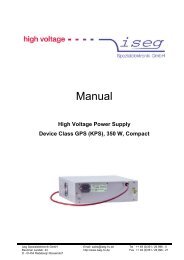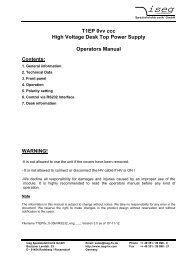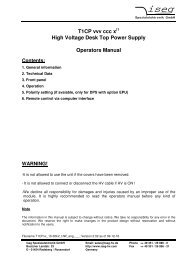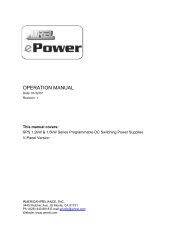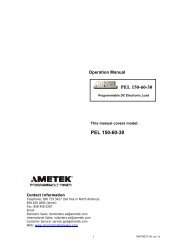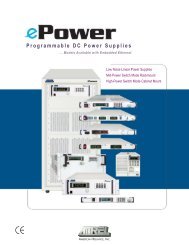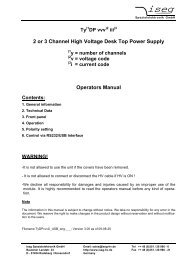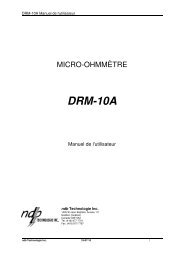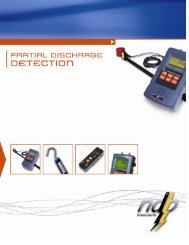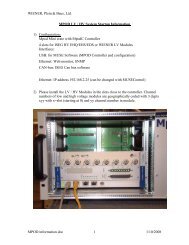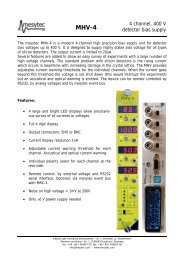PEL-60-60-10 - Physical Instruments
PEL-60-60-10 - Physical Instruments
PEL-60-60-10 - Physical Instruments
You also want an ePaper? Increase the reach of your titles
YUMPU automatically turns print PDFs into web optimized ePapers that Google loves.
LOCAL SENSE CONFIGURATION<br />
When the Electronic Load is strapped for local sensing, an unavoidable voltage drop is incurred in the load leads and<br />
this adds to the load regulation. Hence, local sensing is usually used in applications where the lead lengths are<br />
relatively short or load regulation is not critical. Local or remote sense can be set by pressing UTILITY key and<br />
then ENTER key to enter Measure Sense option.<br />
To meet safety requirement, load wire size should be large enough to carry electric current of the source to the<br />
Electronic Load without overheating. Stranded, copper wires are recommended. The wires should be large enough<br />
to limit the voltage drop to less than 1V per lead. Refer to Table 2.4 for proper wire size selection. Input wire<br />
connections are made to the "+" and "-" terminals on the rear panel of the Load.<br />
USE THE LARGEST GAUGE AND<br />
SHORTEST LENGTH POSSIBLE<br />
( <strong>PEL</strong> )<br />
DC Power Supply<br />
_<br />
(-)<br />
+<br />
(+)<br />
Input terminals<br />
FIGURE 2.2 LOCAL SENSE CONFIGURATION<br />
WARNING<br />
JJJJJJ<br />
To protect personnel against accidental contact with hazardous voltages, ensure that the load, including connections,<br />
have no live parts, which are accessible. Also ensure that the insulation rating of the load wiring and circuitry is<br />
greater than or equal to the maximum input voltage of the electronic load.<br />
WARNING<br />
Never touch the input terminal when your hands are wet. Dry your hands first before operate the instrument.<br />
24 M470030-01 Rev A




